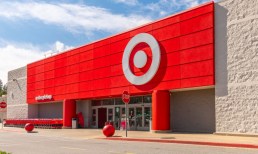Every season has a certain defining characteristic. Spring is about renewal, the holiday season is about family and friends, and later winter (in Boston, anyway) is filled with the gnawing anxiety that it might never ever get above 40 degrees Fahrenheit again.
Summer, however, probably has the best cultural mnemonic, as it is almost universally agreed to as the season of fun. Sure, it is hot almost everywhere — and yes, people do like to complain about the heat, but the heat brings with it a lot of fun stuff: vacations, barbecues, swimming, tubing, going to the beach, road trips, summer camp and blockbuster movies.
In short, summer is all about the fun.
We at PYMNTS are big fans of fun, though we are inherently suspicious of things we cannot numerically quantify or track. We like trackers here at PYMNTS, and fun is one of those things that is notoriously hard to quantify.
Which is not to say that others have not tried.
A few years ago, The New York Times took a shot at the quantification of fun with an article that does the rounds on social media every summer in late June despite the fact that it is now four years old. Their headline figure was $16 billion, which is the aggregate value of the summer camp industry in the United States. They also tossed out $601 as the average per summer, per kid cost of summer fun, unless of course said kids came from affluent families, in which case the cost swelled to a little over $1,000.
Advertisement: Scroll to Continue
We applaud The Times’ efforts to reduce the fun of summer to quantifiable units, but there are two big problems with letting the cost of summer go at $16 billion. First, the data is old and needs some updating. Second, if one is going to quantify the fun of summer, then they’re going to need more data. And preferably data that is fun.
Because data is fun.
We’ll prove it to you.
The High Cost Of High Summer 2016
Since The Times’ definitive article on the high costs of summer in 2012, the cost of summer has gone up quite a lot.
That $16 billion headline figure is a bargain by today’s standards.
The total value of the summer camp industry in the United States is around $18 billion, according to the 2015 American Camp Association Annual business report, making it roughly as valuable as the State of New Mexico (annual budget: $18.4 billion). That spend is broken across 8,400 overnight camps and 5,600 day camps. According the ACA, costs at camp vary a good deal – from $100 per week to $1,500 per week or more.”
Therefore, The Times’ following evaluation of the summer season seems accurate (if a bit of a downer), even if it is four years old.
“The long summer break (our national accommodation for an agricultural life that’s long since faded into history in most communities) speaks volumes for the power of nostalgia and inertia. … I still love summer, but that love definitely comes with a price tag,” noted Times writer KJ Dell’Antonia.
And while the price tag is undeniable, it is also worth looking at the data that indicates Americans in 2016 aren’t just spending more money because they have to, but because they actually want to.
On Vacation
It is going to be a big year for getting out and going somewhere this year. American Express’ data indicates that 80 percent of Americans (or 196 million people) have summer getaway plans this year.
And, the data indicates, this is Americans of all types, not just parents bringing their kids on an annual pilgrimage to expensive tourist traps or relatively affluent older travelers finally treating themselves to a decent vacation away from the expensive and kid-friendly tourist trap. This year, 89 percent of millennials are planning to take a vacation.
All in, Americans are planning to use 8 of their total 14 annual average vacation days this summer. Most will be traveling within the United States and the vast majority will do their traveling over a series of long weekends to a variety of destinations.
Americans may spend a lot of vacation, but it is fair to say they are anticipating the price tag and in some sense really looking forward to it.
So Where Are They Going (And Other Things You’ll Be Glad We Told You)
As we noted, most Americans will be traveling within the U.S. this year — and if Amex’s data is right, they will be going to the national landscapes, or at least really wishing they were since 78 percent of respondents expressed interest in going to a national landscape site this summer. Yellowstone, The Grand Canyon and The Statue of Liberty/Ellis Island remain the top three destinations for goals for travelers.
As for where they will actually be going? The beach. No surprises there.
What is somewhat surprising is how many people know they are going somewhere, but don’t know where yet. When asked, 46 percent of surveyed consumers noted they will book their trip when the right deal presents itself to them online, and they will hold out until they see the right deal.
However, even if nearly half of all consumers don’t know where they are going yet, we can say with some certainty that two things will happen when they get there. They will go to a movie at some point, and they will indulge in unhealthy food when then get there.
If past trends serve as any indication, those Americans will also eat a lot of popcorn — or roughly 176 million orders of the buttery, salty snack. For those keeping score at home, that is 39.6 billion calories.
Those figures are according to 2014 data from the National Association of Concessionaire, which also showed that over the course of a summer, Americans eat 100 million packages of candy, (including literally enough Twizzlers to circle the globe if laid end to end), 12 million hot dogs and 36 million servings of nachos.
So what have we learned about summer?
The New York Times is right. Summer is very expensive, especially for parents.
But if it affords the opportunity to spontaneously see the nation, visit beaches en masse, see national treasures and eat billions of calories in buttered popcorn?
It’s a bit hard to argue it’s not a price worth paying.




